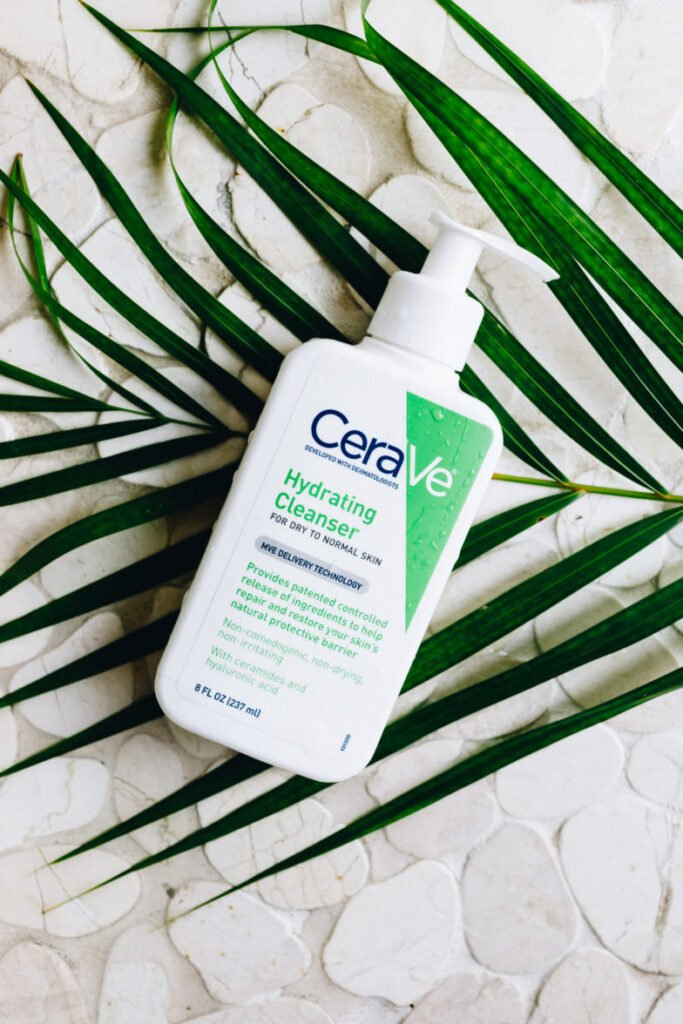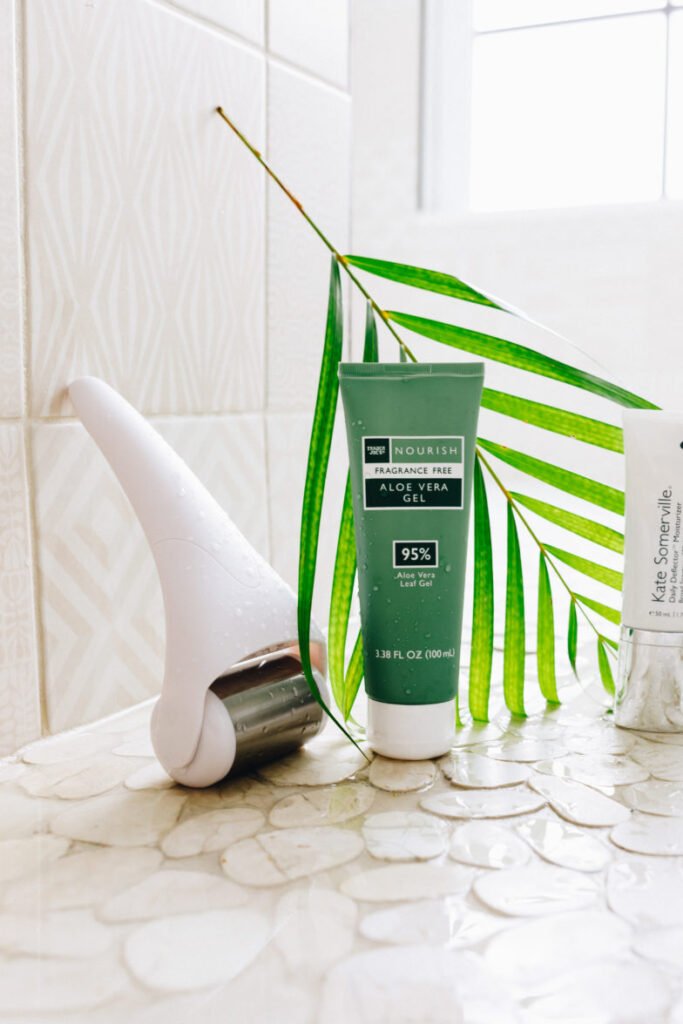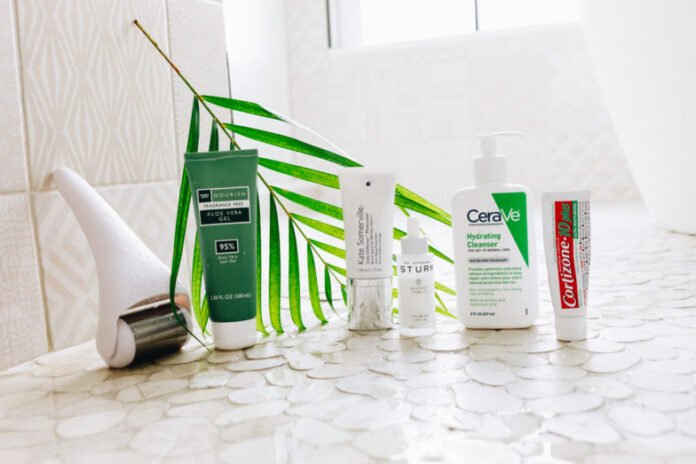In a world where skincare routines are often curated with military precision, few things feel as disorienting as a sudden skin revolt. One moment, you’re glowing; the next, your face resembles a topographical map of irritation—red, itchy, and pleading for mercy. Such was the case for Jane (name changed), a self-proclaimed extrovert who found herself in an uncharacteristic week-long seclusion after a catastrophic encounter with benzoyl peroxide (BPO). Her story—a blend of panic, ice cubes, and expert intervention—offers a roadmap for navigating skin meltdowns with grace.
The Crisis Unfolds: A Five-Minute Firestorm
Skin reactions rarely announce themselves politely. For Jane, a fleeting experiment with BPO escalated into full-blown dermatitis within minutes: fiery redness, relentless itching, and a texture akin to sandpaper. The culprit? An overzealous ingredient that triggered an inflammatory response, leaving her skin barrier compromised and her confidence shattered.
Immediate Triage: Keeping Cool Under Pressure
When skin screams, swift action is critical. Jane’s first-aid protocol—cold water rinses, a fragrance-free cleanser, and a frosty face roller—mirrors dermatologists’ golden rules for acute reactions. “Cold constricts blood vessels, reducing inflammation and heat,” explains Dr. Lisa Kim, a board-certified dermatologist. “Avoiding friction and harsh products prevents further trauma.” Jane’s improvised aloe vera therapy—plucked straight from a houseplant—aligns with science: the plant’s polysaccharides soothe irritation and accelerate healing.
Expert Intervention: The Science of Calm
Desperate for relief, Jane turned to Kate Somerville’s clinic, where a “white light” treatment became her salvation. This non-invasive therapy uses targeted wavelengths to penetrate deep tissue, reducing inflammation without surface heat. “It’s like sending a repair crew directly to the cellular level,” says an esthetician from the clinic. Unlike topical products that sit on the skin, the treatment kickstarts the skin’s innate repair mechanisms—a boon for severe flare-ups.
But What If You Can’t Book a Clinic Visit?
Jane’s privilege of access sparked a vital question: How can everyday individuals replicate this care? The answer lies in a blend of simplicity and strategic product choices.
The Homefront Recovery Plan: 8 Steps to Soothe Rebellion

- Cleanse with Care
Ditch hot water and abrasive scrubs. Opt for lukewarm rinses and a gentle, fragrance-free cleanser like CeraVe Hydrating Cleanser. “Heat exacerbates inflammation,” warns Dr. Kim. “Lukewarm water maintains the skin’s pH balance.” - Pat, Don’t Rub
Post-cleanse, blot skin dry with a soft towel. Vigorous rubbing aggravates sensitivity, much like scratching a sunburn. - Ice Roller Heroics
A chilled jade or stainless-steel roller isn’t just a TikTok trend—it’s a first-aid essential. “Cold therapy reduces swelling and numbs nerve endings,” says Dr. Kim. Store yours in the freezer for instant access to de-puffing relief. - Makeup Moratorium
Resist the urge to camouflage. Foundations and powders trap bacteria and irritants, turning a flare-up into a prolonged battle. Embrace the “skin fast” philosophy—let your face breathe. - Humidify Your Habitat
Dry air is the enemy of healing. A humidifier replenishes moisture, creating a microenvironment that mimics your skin’s ideal conditions.

The Minimalist Product Pantry
When skin is fragile, less is more. Stick to these essentials:
- Aloe Vera Gel: Nature’s anti-inflammatory. Skip store-bought versions with additives; fresh gel from a plant is pure gold.
- Cortisone Cream: A low-dose hydrocortisone (1%) mixed with a mineral SPF moisturizer tames daytime itch without greasiness.
- Ceramide Cream: Brands like CeraVe or First Aid Beauty offer barrier-repairing moisturizers that lock in hydration and shield against pollutants.
- Mineral Sunscreen: Zinc oxide or titanium dioxide formulas protect without chemical irritants. Avoid sprays—they often contain alcohols that sting.
Pro Tip: After day three, introduce a calming serum like Dr. Barbara Sturm’s Anti-Redness Formula. Rich in purslane and licorice root, it’s a botanical hug for angry skin.
When to Sound the Alarm
While home care can work wonders, certain red flags demand professional backup. “If swelling spreads, blisters form, or itching disrupts sleep, see a dermatologist immediately,” urges Dr. Kim. Prescription topicals or oral steroids might be necessary to quell severe reactions.
The Mind-Skin Connection: Patience Over Panic
Healing isn’t linear. Jane’s recovery took days of discipline—no picking, scratching, or experimenting with new products. Hydration (inside and out) and sleep emerged as unsung heroes. “Stress spikes cortisol, worsening inflammation,” notes Dr. Kim. “Meditation or light yoga can be as crucial as your moisturizer.”
The Silver Lining
Skin freak-outs, while traumatic, offer a reset button. Jane emerged with a pared-down routine and newfound respect for her skin’s boundaries. “It’s a reminder that skincare isn’t about ‘fixing’ yourself,” she reflects. “It’s about listening.”
So, the next time your skin stages a mutiny, remember: Cool heads (and colder rollers) prevail. And when in doubt, let nature—and a trusted dermatologist—guide you back to calm.

